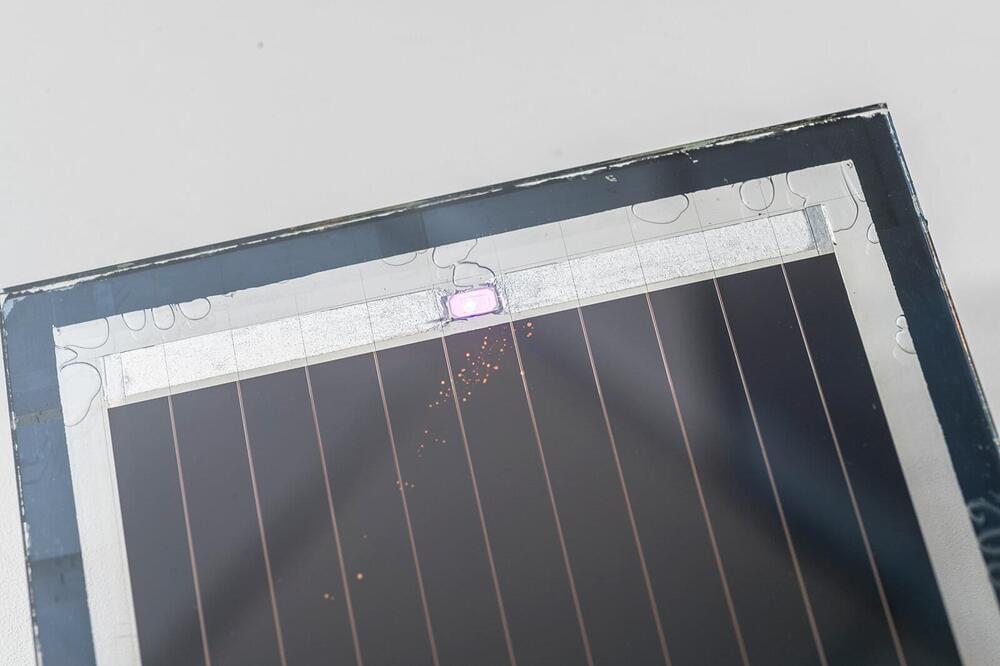A experiment that simulated random interactions for millions of generations led to the emergence of a digital form of life.



In a study published recently in Physical Review Letters, researchers unveiled a new type of quantum sensor that they report leverages quantum entanglement to perform detections that, note the quote marks, “travel back in time”. The researchers add the findings could — one day — lead to novel quantum sensors that are ideally suited for astronomical detection and magnetic field investigations.
The study, led by Kater Murch, Charles M. Hohenberg Professor of Physics and Director of the Center for Quantum Leaps at Washington University in St. Louis, introduces a sensor that can probe past events in complex systems. The team, which also included scientists from the National Institute of Standards and Technology (NIST) and the University of Cambridge, described the innovation in the press release as a bit like “sending a telescope back in time to capture a shooting star that you saw out of the corner of your eye.”
The sensor operates by entangling two quantum particles in a quantum singlet state, where their spins point in opposite directions. The process begins with one particle, the “probe,” being subjected to a magnetic field that causes it to rotate. The key breakthrough comes when the second particle, the “ancilla,” is measured. This measurement effectively sends its quantum state back in time to the probe, allowing researchers to optimally set the spin direction of the probe qubit in what Murch refers to as hindsight.


In 2023, Google and Microsoft each consumed 24 TWh of electricity, surpassing the consumption of over 100 nations, including places like Iceland, Ghana, and Tunisia, according to an analysis by Michael Thomas. While massive energy usage means a substantial environmental impact for these tech giants, it should be noted that Google and Microsoft also generate more money than many countries. Furthermore, companies like Intel, Google, and Microsoft lead renewable energy adoption within the industry.
Detailed analysis reveals that Google’s and Microsoft’s electricity consumption — 24 TWh in 2023 — equals the power consumption of Azerbaijan (a nation of 10.14 million) and is higher than that of several other countries. For instance, Iceland, Ghana, the Dominican Republic, and Tunisia each consumed 19 TWh, while Jordan consumed 20 TWh. Of course, some countries consume more power than Google and Microsoft. For example, Slovakia, a country with 5.4 million inhabitants, consumes 26 TWh.



Scientists at the City University of Hong Kong (CityUHK) have developed highly efficient, printable and stable perovskite solar cells to achieve carbon neutrality and promote sustainable development.
The new type of perovskite solar cells can be mass-produced at a speed comparable to newspaper printing, with a daily output of up to 1,000 solar panels. Owing to their flexible, semi-transparent characteristics, they can also be made into light-absorbing glass windows, realizing the concept of “urban solar farms” in cities with many high-rise buildings.
The research is led by the Lee Shau Kee Chair Professor of Materials Science at CityUHK, Professor Alex Jen Kwan-yue, and the results were published in Nature Energy.

Furthermore, the synergy between educational programs, cultural influences and the tangible benefits derived from space exploration not only enriches our present-day society but also ensures a legacy of continuous innovation and exploration. This ongoing engagement with space inspires future generations to look beyond our planetary boundaries and consider what might be possible in the broader cosmos.
Space exploration presents significant challenges, including costs, astronaut health risks and technological hurdles for interstellar travel. Ethical and legal considerations regarding space colonization, resource utilization and celestial environmental impact require careful consideration and international cooperation.
While Silicon Valley visionaries envision a future among the stars, other voices remind us of our responsibilities to Earth. These are not mutually exclusive goals. By leveraging advancements and opportunities from space exploration, we can better protect and enhance life on Earth. Through economic benefits, scientific advancement and social inspiration, space exploration remains a crucial endeavor for humanity, not as an escape from our problems, but as a way to expand our horizons and solve them on our home planet.

Scientists are developing a process inspired by nature that efficiently recovers europium from old fluorescent lamps. The approach could lead to the long-awaited recycling of rare earth metals.